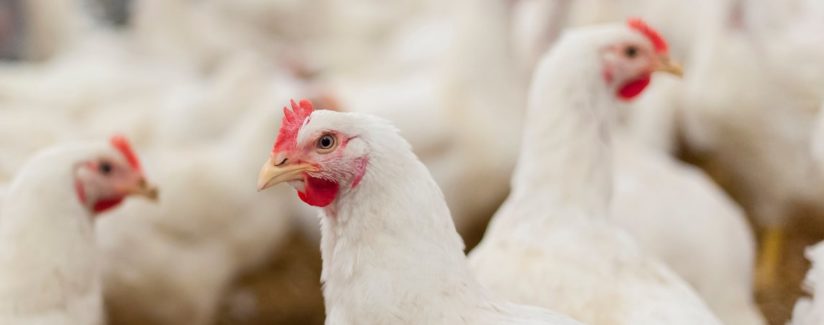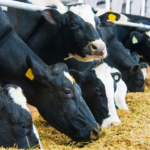
What Are Slow Growing Chickens?
Chickens are incredible animals. They grow quickly, especially compared to other meat animals such as beef and pork.
A typical broiler – the name for a chicken grown for meat – takes an average of 47 days to reach its full size of six pounds. A new type of chicken now available takes a little more time to reach market.
To find out more about these slower growing chickens, we reached out to Dr. Sara Orlowski, Extension Poultry Specialist, and Casey Owens-Hanning, Professor of Poultry Science, with the University of Arkansas.
What is meant by “slow growth” chickens?
Dr. Orlowski: “The name says it all. Slow growth chickens grow slower than a normal, conventionally raised chicken. They gain less weight per day and take about 2 to 3 weeks longer to reach market weight. Certain breeds are selected for a slower growth rate or normal conventional birds are raised on a diet that isn’t as energy rich as a normal chicken diet, slowing the growth.”
Chickens today grow to a larger size in a shorter time than in years past. Why is that?
Dr. Orlowski: “A combination of genetic selection and breeding for growth and welfare traits and improvements made in housing conditions and feed have allowed for chickens to grow to a larger size in less time. It is not because of steroid usage (a common myth) as steroids have been illegal for use in poultry since the 1950s. Chickens are also bigger in recent years because of longer growout periods for some market segments.”
There have been concerns raised that modern chickens grow too quickly. Are they able to walk?
Dr. Orlowski: “Yes, conventional chickens are able to walk. While genetic selection has focused on growth rate and meat yield, they have also been selected for welfare traits such as leg health, skeletal structure and heart health. Mortality in the chicken houses has significantly decreased over the past 30 years as a result of the genetic selection programs used.”
“However, with any livestock species, health problems do exist but are much less frequent than they were in previous years. If a bird is unable to walk, they will be humanely euthanized to prevent further pain and suffering.”
Is there a difference in flavor or texture between slow growth chickens and conventional ones?
Dr. Owens- Hanning: “There are many factors that can go into development of flavor and texture in chicken meat. Tenderness can decrease as birds get older, so it is possible that slower growing birds can be tougher if grown longer to obtain adequate meat yield. Processing factors such as the time at which breast meat is taken off the frame of the carcass can impact tenderness. Whole birds will typically be more tender than breast meat that is taken off the bird after chilling of the carcass, which is known as early deboning.”
Is there a nutritional difference between slow growth and conventional chicken?
Dr. Orlowski: “Differences in genetic selection between slow growth and conventional birds will cause slight changes in the nutritional profile of the meat produced, but not much. A majority of the nutritional differences that will occur between conventional and slow growth birds is a result of what those birds have been fed as a diet. If both conventional birds and slow growth birds are fed the same diet, there should be very little nutritional differences in the meat.”
Why is meat from slow growing chicken typically more expensive?
Dr. Orlowski: “It’s simple. Slow growth chicken takes more money to produce through feed and housing costs than conventionally raised chickens. The cost of production alone makes that slow growth chicken pricier at the grocery store.”
Chickens grow more quickly today than in years past because of selective breeding. Neither steroids or hormones are used in chickens. Slow growing chickens are from breeds that grow at a slower rate than most other birds and are an option available for shoppers.



























